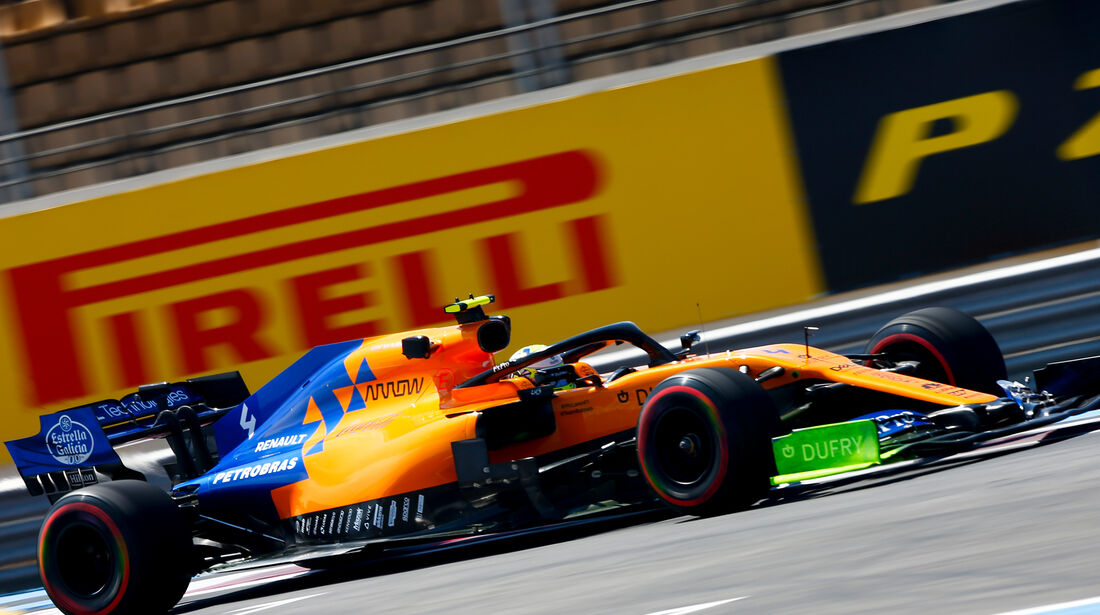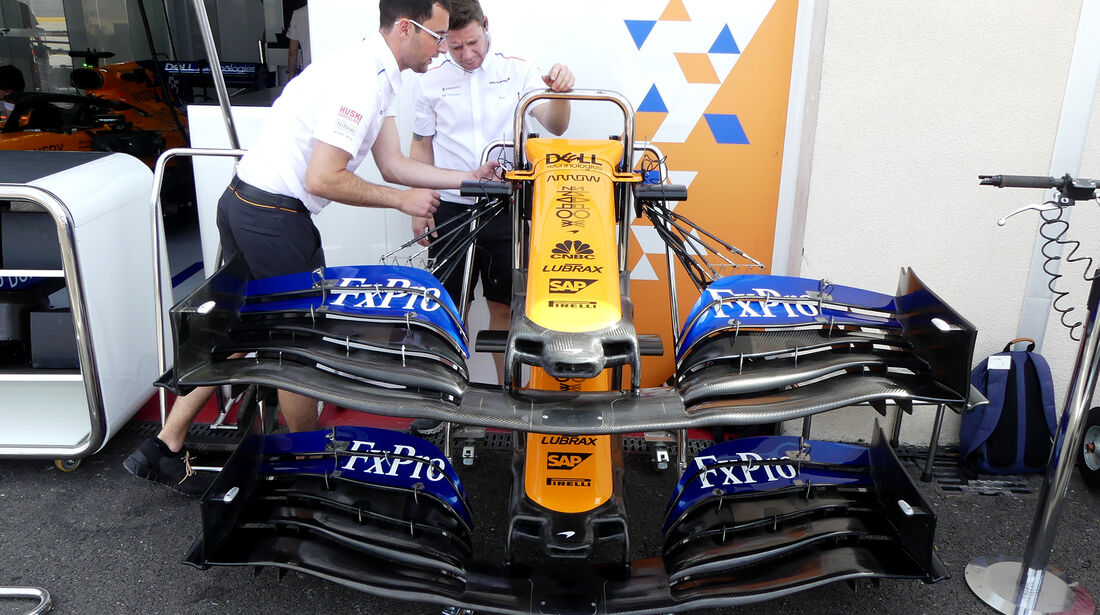- Login or Register
No account yet? Sign up





Only RicciardoPowerandtheGlory wrote: ↑21 Jun 2019, 16:13I think they are going about their business really well so far, nice and solid. Does anyone know if Mclaren got the SPEC B renault same as Ricciardo? or have Renault kept the best for their team at their home GP'?????
Or McL will wait and see before switchingPowerandtheGlory wrote: ↑21 Jun 2019, 16:13I think they are going about their business really well so far, nice and solid. Does anyone know if Mclaren got the SPEC B renault same as Ricciardo? or have Renault kept the best for their team at their home GP'?????

f1rules wrote: ↑21 Jun 2019, 16:23seem norris is running the new stronger fw
https://pbs.twimg.com/media/D9l3nAJXkAARmo5.jpg
So this seems partially answered. By having less yaw on the front wing, they do now have the opportunity to run the wing closer to the ground across the whole lap, so the main benefit of this may not in fact be speed in low speed corners, but speed almost everywhere else.mwillems wrote: ↑21 Jun 2019, 14:04I think what is a little confusing is that everyone refers to the wheels being raised and lifted, when in fact it is the chassis being rolled in a direction relative to steering to keep the Aero level with the ground.PhillipM wrote: ↑21 Jun 2019, 13:45Well, firstly, this POU acronym that's sprung up is misleading because most teams already ran POU, just in a different spot, and secondly the inboard mount for the pushrod affects mainly spring preloads and transients, not the hardpoint geometery like castor, camber, etc - that's set by the wishbones.
Running the front wing closer to ground effect in tight corners where air would otherwise just flow in from under the endplate because of the yaw angle - is more significant than the 'changes in contact patch' (and anything required there could have already been engineered into the wishbone pickups before anyway).
MT840's explanation of the outer wheel getting pushed down and the inner wheel lifted up doesn't bear scrutiny even at first glance - regardless of other issues (it would cause more weight transfer, not less) - because the Mclaren implementation lifts both front wheels relative to the chassis in tight corners. You can see that just from the longitudinal position of it relative to the steering axis.
What I ant to get my head round and be clear about is that there seems to be two main benefits to this.
- The first is that a more stable car can operate in a more specific aero window and hence get closer to optimal
- The second is that now there is less yaw in low speed corners, are we able to physically lower the front of the car to enhance ground effect
I also remember some negative affects of running the front wing close to the ground, sometime around when everyone was discussing the new front wing concepts. Anyone know what that was?
- Thirdly, does this have much affect on mechanically induced traction, I would imagine a slight affect on CoG and that this will give a small benefit. But I can't imagine any really change in behavior between the tyre and the track that wasn't induced by aero?
I am keen to know if the car sits more level with the ground in mid speed corners as well. Obviously having a wider operating window here would be a great benefit, given our slower mid corner speed.
Edit: Just read in the technical thread that the car now naturally drops lower when the car is turning, so there is not necessarily a need to physically make the wing lower to the ground.
Yes he has more parts so more downforce i think they split their program to have more dataf1rules wrote: ↑21 Jun 2019, 16:23seem norris is running the new stronger fw
https://pbs.twimg.com/media/D9l3nAJXkAARmo5.jpg